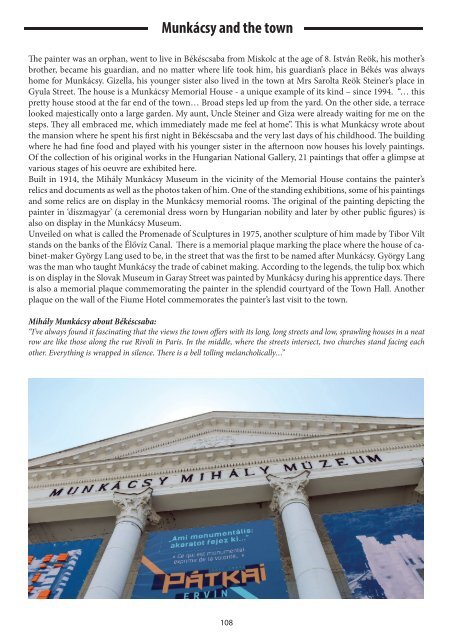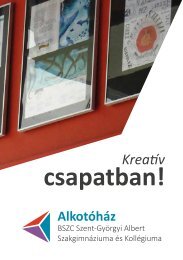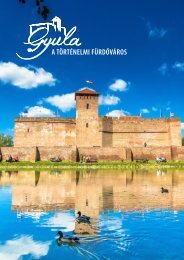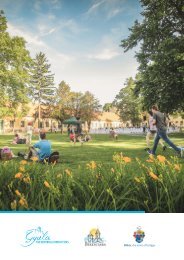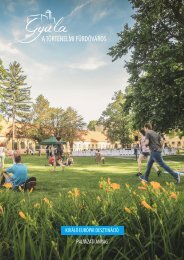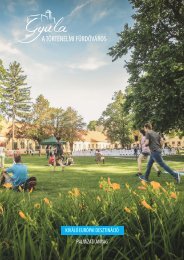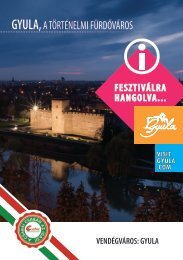eden-kiadvany-06-EN-yumpu
Create successful ePaper yourself
Turn your PDF publications into a flip-book with our unique Google optimized e-Paper software.
Munkácsy and the town<br />
The painter was an orphan, went to live in Békéscsaba from Miskolc at the age of 8. István Reök, his mother’s<br />
brother, became his guardian, and no matter where life took him, his guardian’s place in Békés was always<br />
home for Munkácsy. Gizella, his younger sister also lived in the town at Mrs Sarolta Reök Steiner’s place in<br />
Gyula Street. The house is a Munkácsy Memorial House - a unique example of its kind – since 1994. “… this<br />
pretty house stood at the far end of the town… Broad steps led up from the yard. On the other side, a terrace<br />
looked majestically onto a large garden. My aunt, Uncle Steiner and Giza were already waiting for me on the<br />
steps. They all embraced me, which immediately made me feel at home”. This is what Munkácsy wrote about<br />
the mansion where he spent his first night in Békéscsaba and the very last days of his childhood. The building<br />
where he had fine food and played with his younger sister in the afternoon now houses his lovely paintings.<br />
Of the collection of his original works in the Hungarian National Gallery, 21 paintings that offer a glimpse at<br />
various stages of his oeuvre are exhibited here.<br />
Built in 1914, the Mihály Munkácsy Museum in the vicinity of the Memorial House contains the painter’s<br />
relics and documents as well as the photos taken of him. One of the standing exhibitions, some of his paintings<br />
and some relics are on display in the Munkácsy memorial rooms. The original of the painting depicting the<br />
painter in ‘díszmagyar’ (a ceremonial dress worn by Hungarian nobility and later by other public figures) is<br />
also on display in the Munkácsy Museum.<br />
Unveiled on what is called the Promenade of Sculptures in 1975, another sculpture of him made by Tibor Vilt<br />
stands on the banks of the Élővíz Canal. There is a memorial plaque marking the place where the house of cabinet-maker<br />
György Lang used to be, in the street that was the first to be named after Munkácsy. György Lang<br />
was the man who taught Munkácsy the trade of cabinet making. According to the legends, the tulip box which<br />
is on display in the Slovak Museum in Garay Street was painted by Munkácsy during his apprentice days. There<br />
is also a memorial plaque commemorating the painter in the splendid courtyard of the Town Hall. Another<br />
plaque on the wall of the Fiume Hotel commemorates the painter’s last visit to the town.<br />
Mihály Munkácsy about Békéscsaba:<br />
“I’ve always found it fascinating that the views the town offers with its long, long streets and low, sprawling houses in a neat<br />
row are like those along the rue Rivoli in Paris. In the middle, where the streets intersect, two churches stand facing each<br />
other. Everything is wrapped in silence. There is a bell tolling melancholically…”<br />
108


